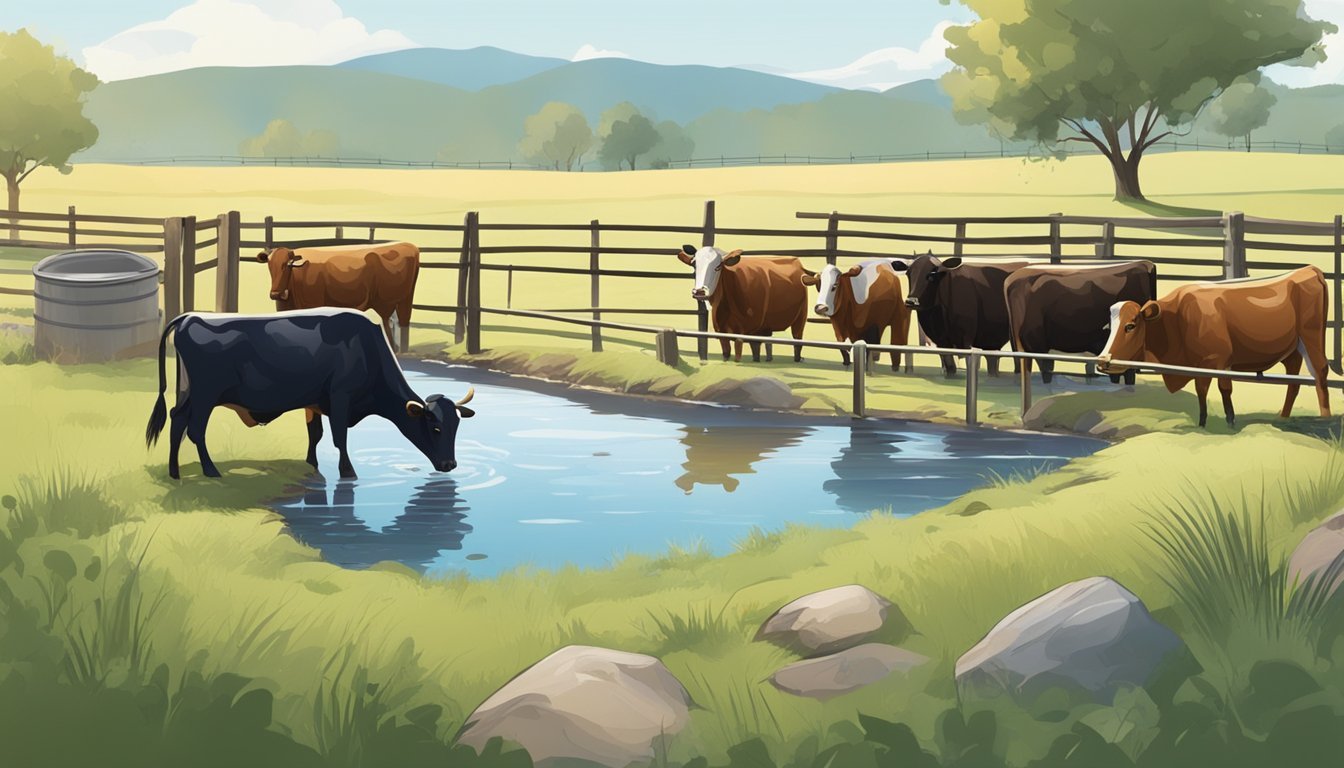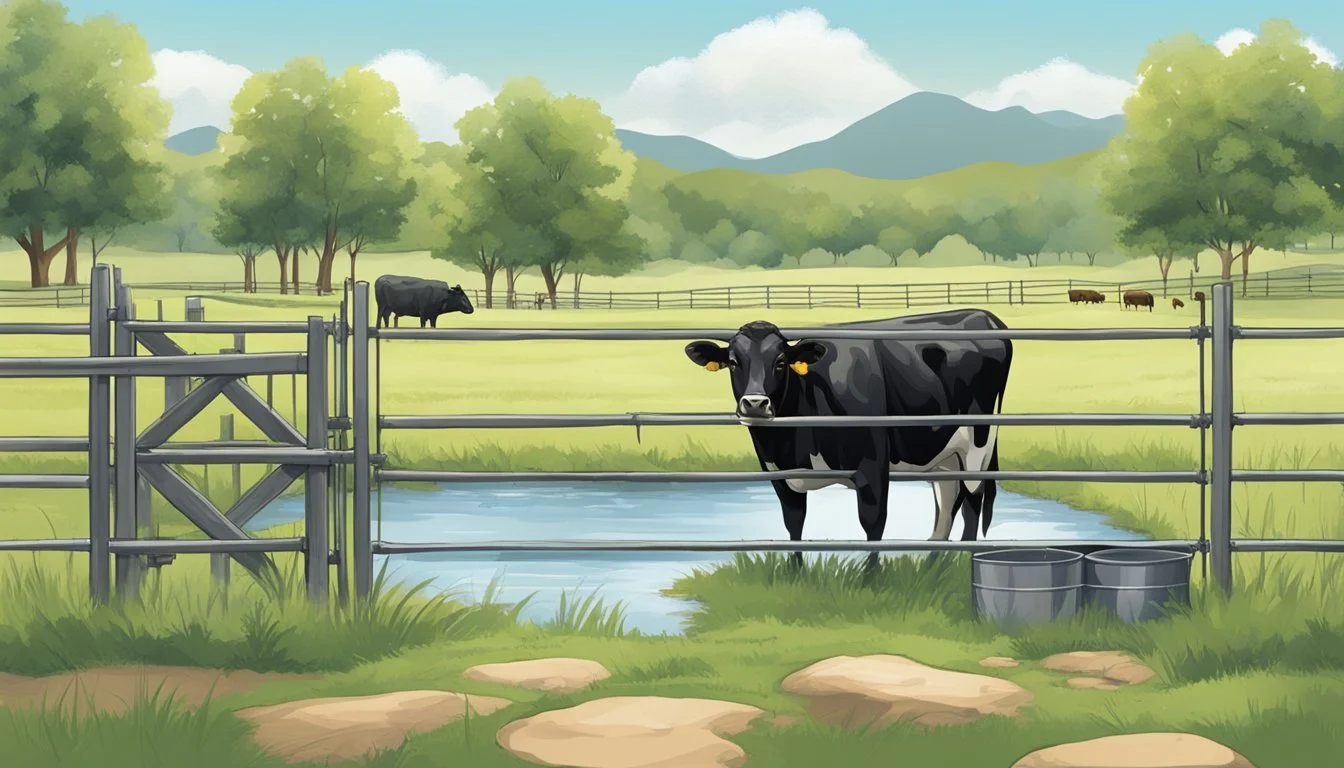How do I ensure my cattle have access to clean water?
Key Strategies for Healthy Livestock Hydration
Access to clean water is vital for the maintenance of cattle health and performance. The most basic yet crucial component of cattle care involves ensuring that these animals have sufficient clean water as it directly impacts their growth, milk production, and overall well-being. The quality of water cattle consume is as important as the quantity, as poor water quality can lead to health risks such as disease and dehydration.
In order to maintain proper hydration levels and prevent health complications, farmers must be vigilant about the condition of water sources. Cattle's water needs can fluctuate based on factors such as size, diet, weather, and stage of production, with an adult cow typically requiring between 8 to 20 gallons of water per day. They need unrestricted access to water sources, and in hot conditions, they may need access to water as frequently as every six hours. Even in colder months, ensuring cattle drink enough water is essential, as they may reduce their intake when water is very cold, which can impact their feed intake and weight gain.
It is also essential to regularly clean water troughs to prevent the buildup of algae, bacteria, and other contaminants. A thorough cleaning regimen includes emptying and rinsing the troughs and using a bleach solution followed by adequate rinsing with clean water. These practices not only contribute to preventing diseases but also encourage cattle to drink the necessary amounts of water, supporting their overall health and productivity.
Understanding Cattle Water Requirements
Ensuring cattle have enough water is crucial for their health and productivity. Water plays a fundamental role in physiological processes such as temperature regulation, growth, and milk production.
Factors Influencing Water Consumption
Several factors affect the water consumption of cattle. Livestock water needs can fluctuate based on:
Temperature and Climate: Higher temperatures increase water needs due to more water being lost to evaporation and respiration.
Diet: Salty or dry feed can lead to increased thirst.
Health and Stress: Sick or stressed animals may drink more or less water than healthy ones.
Understanding these factors helps in planning to meet the daily water needs for various cattle groups.
Daily Water Needs for Various Cattle Groups
The water requirements for beef cattle vary with their stage of production, size, and environmental conditions. On average, cattle drink about 2 gallons of water per hundred pounds of body weight daily.
Calves: Require less water compared to mature cattle, correlating to their smaller body weight.
Beef Cattle: May consume between 25-30 gallons of water per day.
Lactating Cows: Have increased water needs to support milk production. Insufficient water can lead to dehydration, affecting milk yield and quality.
Weight Gain: Adequate water is essential for proper digestion and absorption of nutrients necessary for weight gain.
Preventing dehydration in cattle is crucial as it can lead to severe health problems and hinder weight gain and productivity. Regular monitoring of water consumption and the factors influencing it ensures that cattle have the access they need to this vital resource.
Selecting the Right Water Source
When it comes to providing clean water for cattle, the choice of water source is pivotal. This choice impacts not only the health of the herd but also the ease of water management for the cattle producer.
Types of Water Sources for Cattle
Several different water sources are available to cattle, including ponds, streams, wells, and tanks. Ponds are natural or man-made bodies of water that can serve as a water supply but must be maintained to ensure the water quality remains high. Streams may offer a constant flow of water, but their quality can fluctuate with weather and run-off. Wells offer a controlled and consistent water supply, while tanks can be filled and cleaned regularly, ensuring clean water is always available.
Pros and Cons of Different Water Sources
Each type of water source comes with its advantages and drawbacks.
Ponds
Pros: Natural setting and often easily accessible
Cons: Higher risk of contamination and requires regular maintenance
Streams
Pros: Continuous supply and natural water source
Cons: Variable quality and potential legal regulations
Wells
Pros: Consistent quality and not weather-dependent
Cons: Can be expensive to drill and maintain
Tanks
Pros: Easiest to manage for water quality
Cons: Requires regular cleaning and refill
Choosing the right water source for cattle includes weighing these factors according to specific needs and capabilities, always keeping the livestock's health as the priority.
Water Quality and Safety
Ensuring cattle have access to clean water is vital for their health and productivity. Contaminants can degrade water quality, leading to health issues and impeding cattle performance.
Common Water Contaminants
Cattle water troughs are susceptible to contaminants that impair water quality. Common culprits include nitrates, which can accumulate from fertilizer use, and bacteria that thrive in stagnant water. Blue-green algae, particularly in times of high temperatures and sunlight, pose a risk by producing toxins. Other contaminants include heavy metals, minerals such as calcium, sulfates, chlorine, and excessive salt which can all affect the taste, smell, and safety of water. Furthermore, high levels of dissolved solids can negatively impact water palatability and cattle hydration.
Impact of Poor Water Quality on Cattle Health
Water contaminated with high levels of nitrates can cause nitrate poisoning, leading to reduced oxygen transport in the blood. Contaminated water can also harbor pathogens causing diseases. Algae growth, particularly blue-green algae, can produce harmful toxins that are associated with live stock poisoning. Moreover, increased salinity from high dissolved mineral content can induce diarrhea and other health concerns.
Testing and Monitoring Water Quality
Regular water testing is crucial for maintaining cattle health and productivity. Testing for total dissolved solids (TDS) can reveal the presence of salts, nitrates, and sulfates. PH levels should be monitored to ensure water is neither too acidic nor too alkaline. Nitrogen levels indicate possible contamination from farm runoff. Testing for bacteria and algae, particularly in warm months, is essential for preventing disease. It is recommended to conduct these tests at least annually, or more frequently in areas with known water quality issues.
For detailed guidance on cleaning troughs to maintain water quality, visit Maintaining a Clean Water Trough for Cattle. For information on the implications of water quality on livestock, refer to Water Quality for Livestock Drinking.
Water Access and Distribution
Access to clean water is essential for cattle health and productivity. An efficient water system design and constant availability are critical to meet cattle water requirements.
Designing Effective Watering Systems
Watering systems for cattle must be carefully designed to meet the herd's size and the pasture layout. Gravity-fed systems and pumps play a significant role in water distribution across extensive farming areas. Troughs should be sized and positioned to ensure that all animals have adequate space to drink without competition. Regular maintenance of tanks is necessary to avoid water contamination and ensure the longevity of the system.
Ensuring Unrestricted Access to Water
Cattle must have unrestricted access to drinking water. Water deprivation, even for short periods, can significantly impact health and milk production. It is important to establish multiple water access points, especially in larger fields, to prevent restricted access and ensure each animal can drink as needed. Tanks should be continuously checked and refilled to avoid any chance of water shortage.
Maintaining Water Tanks and Troughs
Ensuring cattle have continuous access to clean water involves regular cleaning and the prevention of contaminants. Maintaining water tanks and troughs is essential to prevent the growth of algae, bacteria, and the presence of stagnant water, which can negatively impact livestock health.
Cleaning and Maintenance Routines
Frequency and Process: Tanks and troughs should be emptied and cleaned at least once a week to maintain water quality. Using a 10% bleach solution helps to disinfect the surfaces effectively. It is critical to rinse the tanks thoroughly after disinfecting to remove any residual bleach.
Empty the tank of all water
Remove debris
Use a stiff-bristled brush and detergent
Disinfect with bleach solution
Rinse thoroughly to ensure no bleach remains
Daily Inspections: Visual inspections can help identify any issues with water clarity or the presence of foreign objects that can contaminate the water supply.
Preventing Algae and Contaminant Build-Up
Managing Sunlight Exposure: Algae growth in tanks and troughs is often exacerbated by direct sunlight. Providing shade can significantly reduce the presence of blue-green algae and other common types of algae.
Position tanks and troughs in shaded areas when possible
Use safe algaecide treatments if recommended
Water Circulation: Stagnant water is a breeding ground for bacteria and algae. Implementing a water circulation system can help prevent contaminants from settling and promote a healthier water environment.
Consider the use of aerators or pumps
Regularly check and maintain water lines in larger, automatic systems
Regular Monitoring for Contaminants: Keep an eye out for signs of bacterial growth, such as changes in water smell or color. Quick action can prevent health issues for the cattle and more extensive maintenance issues down the line.
Each step, from the daily visual inspection to the thorough cleaning process, contributes to the overall health and well-being of your livestock by ensuring they have ongoing access to clean water.
Cattle Health and Water
Access to clean water is paramount for maintaining cattle health. It affects their digestion, body temperature regulation, and overall productivity.
Signs of Dehydration and Water-Related Illnesses
Cattle can exhibit several signs of dehydration including:
Sunken eyes
Dry mucous membranes
Reduced urine output, which may lead to darker urine
Lethargy
Thick saliva
When dehydration escalates, cattle may suffer from more serious water-related illnesses such as impaired digestion and reduced reproductive performance. Detection of diarrhea or changes in feces can be indicative of water quality issues, potentially leading to dehydration or illnesses.
Role of Water in Disease Prevention
Regular access to clean water plays a crucial role in disease prevention in cattle. Proper hydration helps to:
Maintain nervous system function
Sustain body temperature
Assimilate nutrients effectively for optimal digestion
Ensure the regular excretion of waste through urine and feces
Water-related disease prevention also directly influences herd health. If cattle do not drink adequate amounts due to the poor quality or availability of water, it can contribute to a wide range of health issues, potentially impacting their growth, body weight, and overall performance.
Environmental and Management Considerations
Ensuring cattle have access to clean water involves understanding how external factors such as climate and resource availability affect water supply and consumption. Good management practices are critical for adapting to these environmental challenges and maintaining cattle health.
Impact of Seasonal Changes on Water Needs
The water needs of cattle fluctuate with seasonal changes. During hot weather, cattle experience increased stress, requiring more water for thermoregulation. Cattle producers must ensure that water sources do not become too warm, as high temperatures can reduce feed intake and hinder average daily weight gains. Providing shade and protecting troughs from direct sunlight can help control water temperature.
Water Management During Drought
Drought conditions can drastically limit water availability. Cattle diets may shift to include more hay and less green forage, which influences water consumption. Producers should monitor water levels closely, as cattle require consistent access to water to digest dryer feeds efficiently. Proper management during drought includes planning for water storage and reducing herd size if necessary to maintain an adequate supply.
Effect of Water on Cattle Diet and Feed Intake
Salts, magnesium, and sodium levels in water can impact cattle diets and feed intake. Clean water contributes to better feed conversion, affecting nutrient absorption and average daily weight gains. Cattle that drink enough water are better equipped to handle dietary salts and maintain proper mineral balance, which is crucial for their health and productivity.





